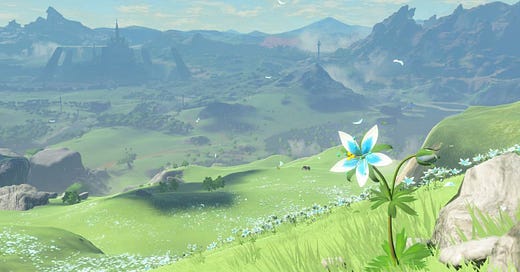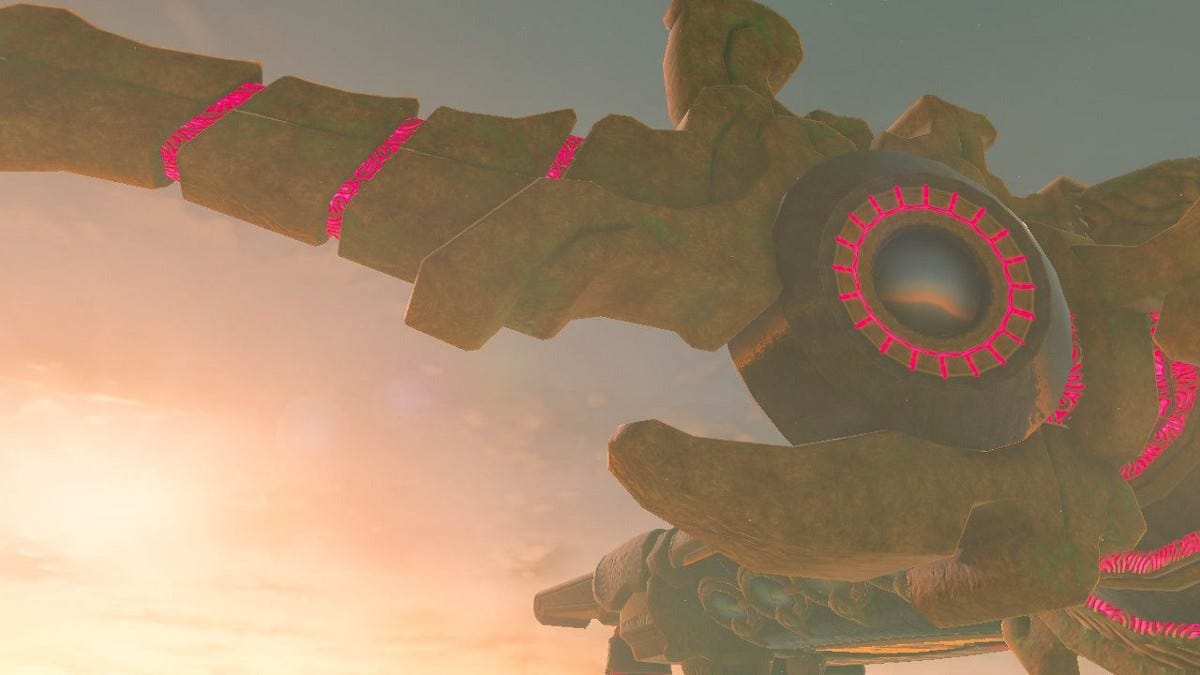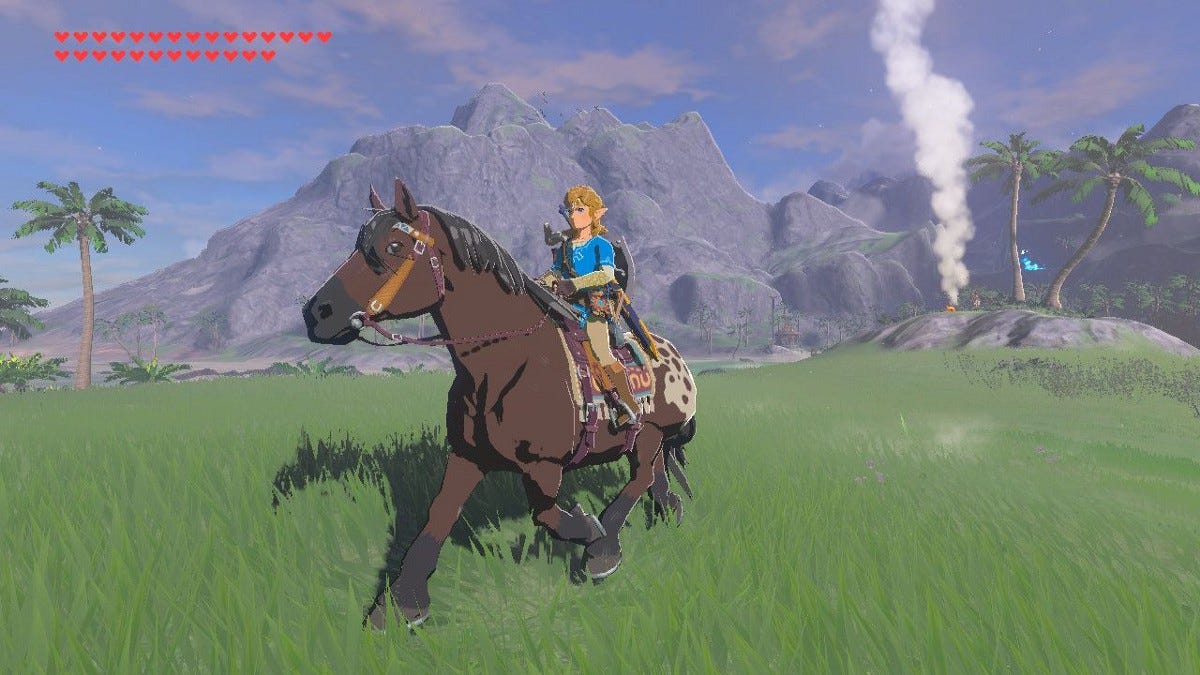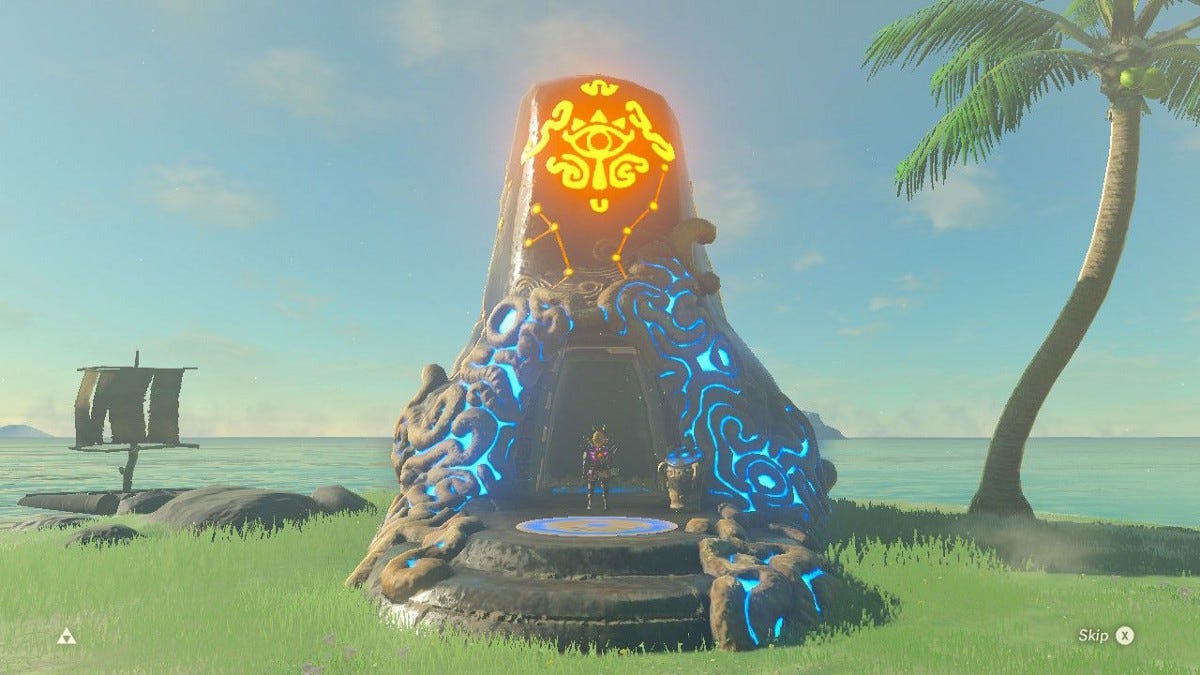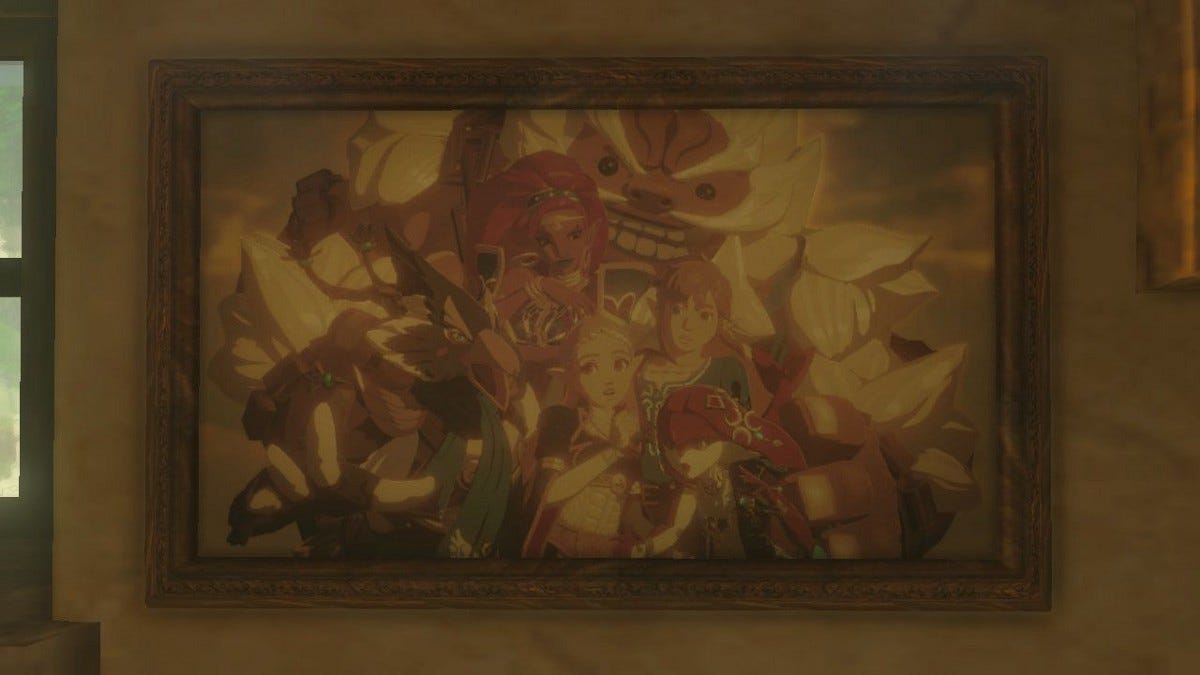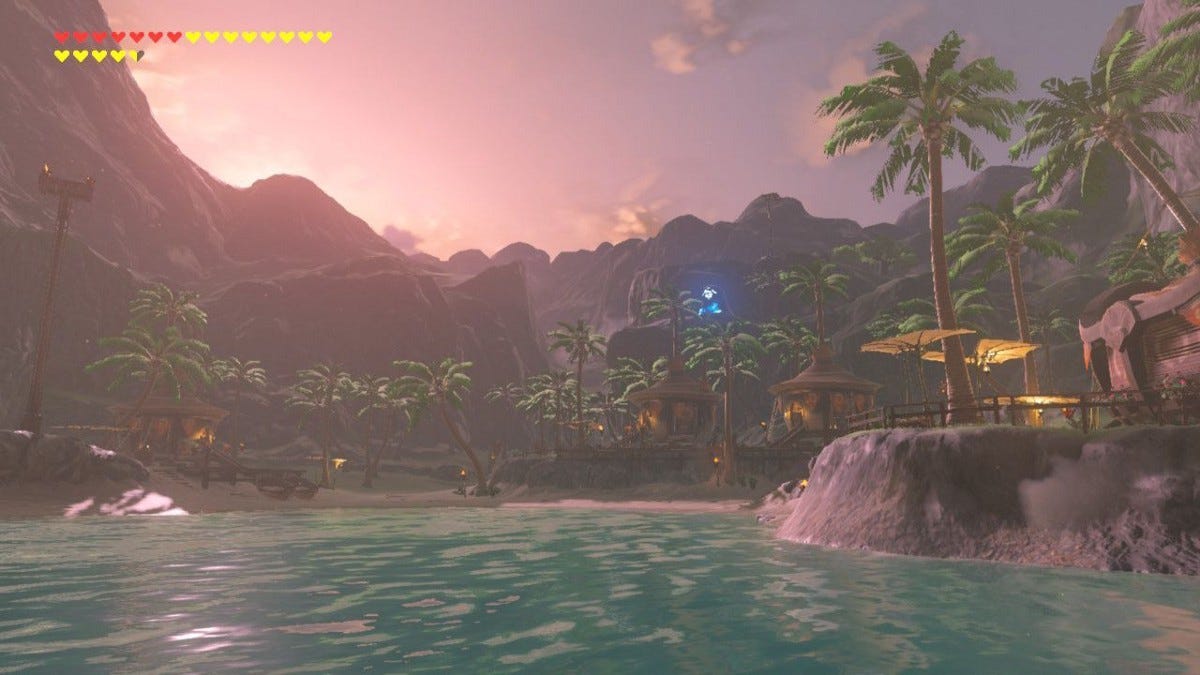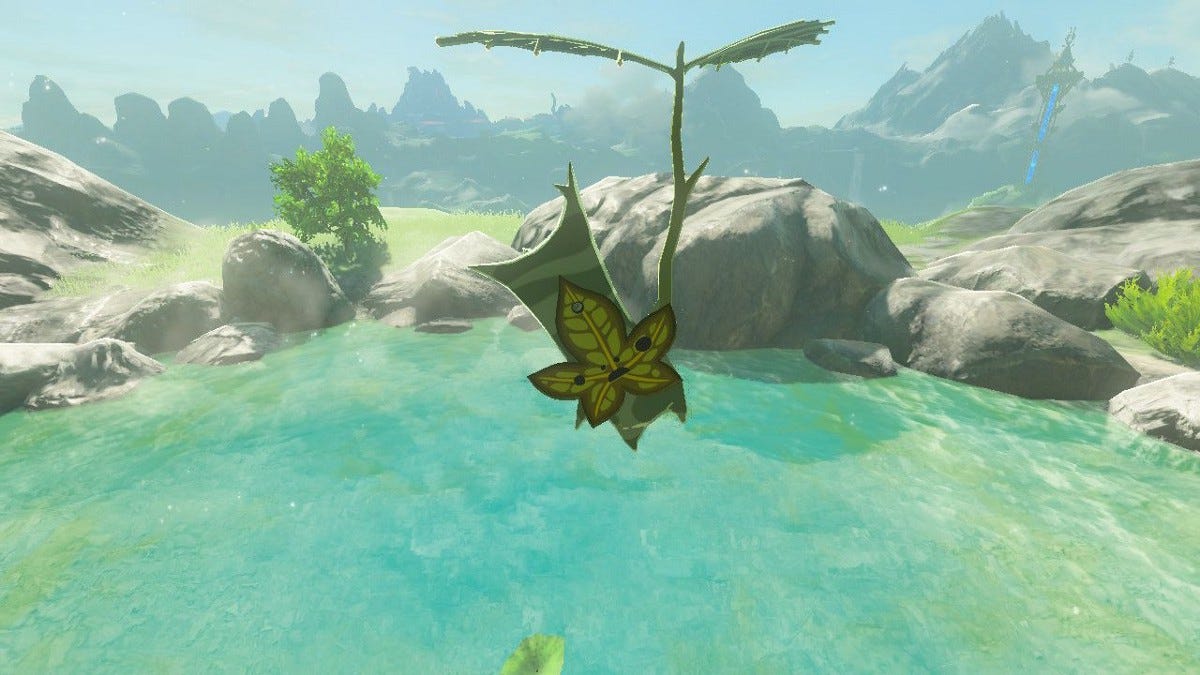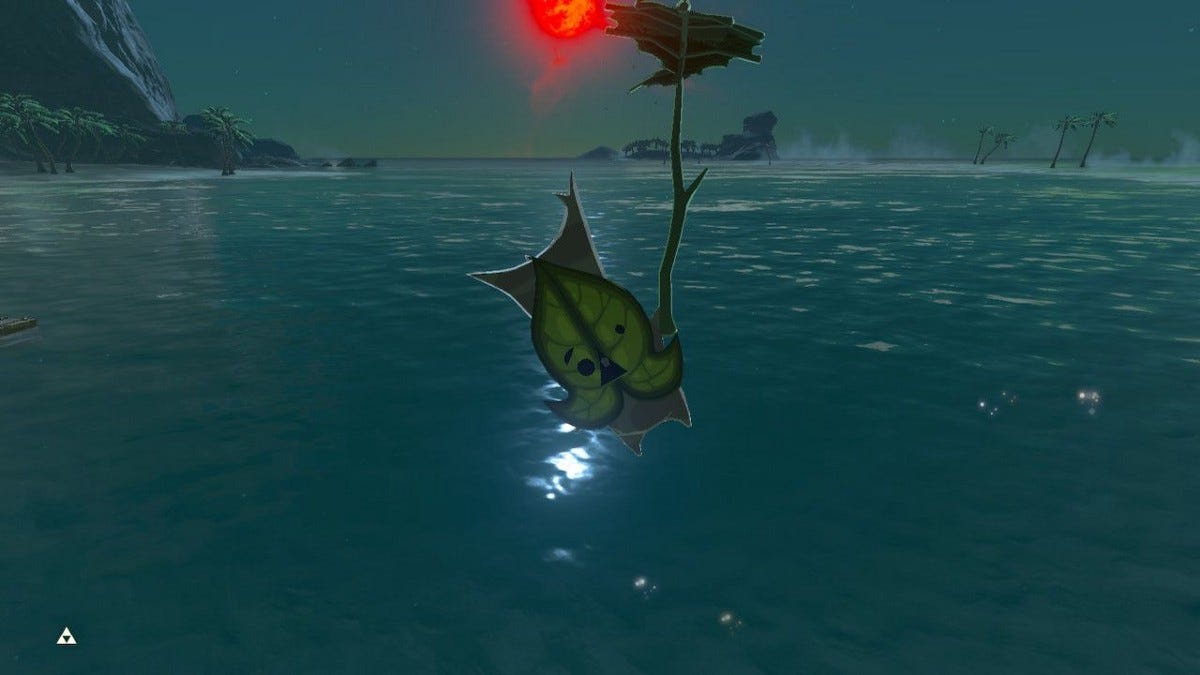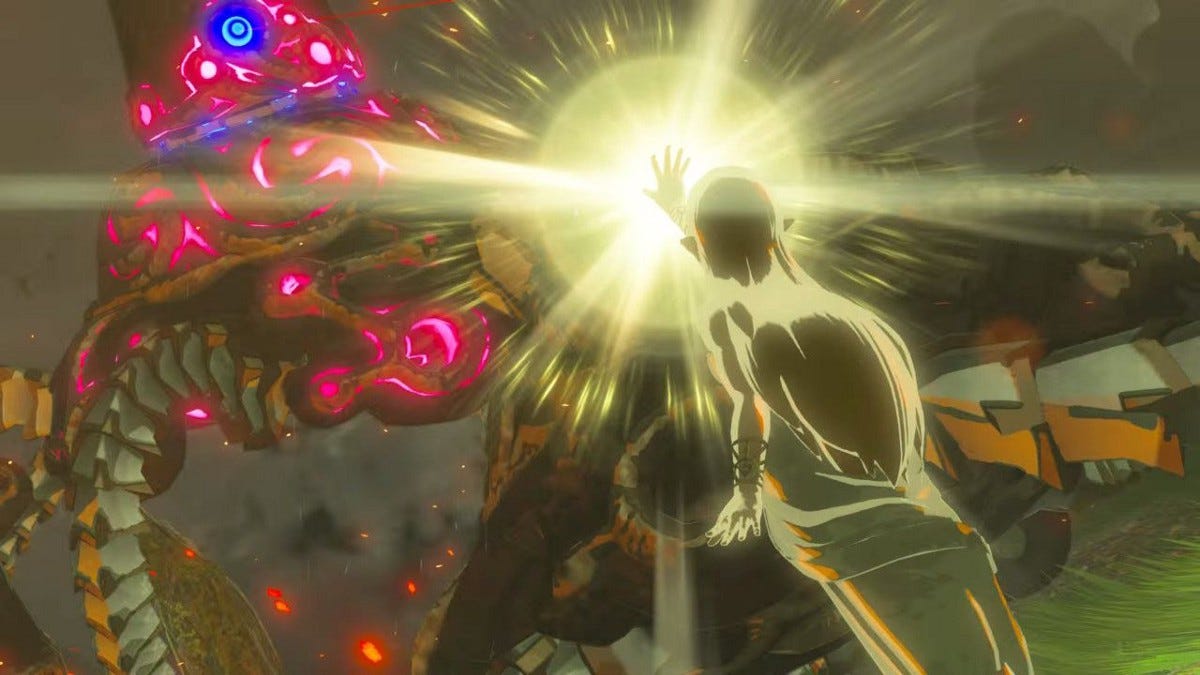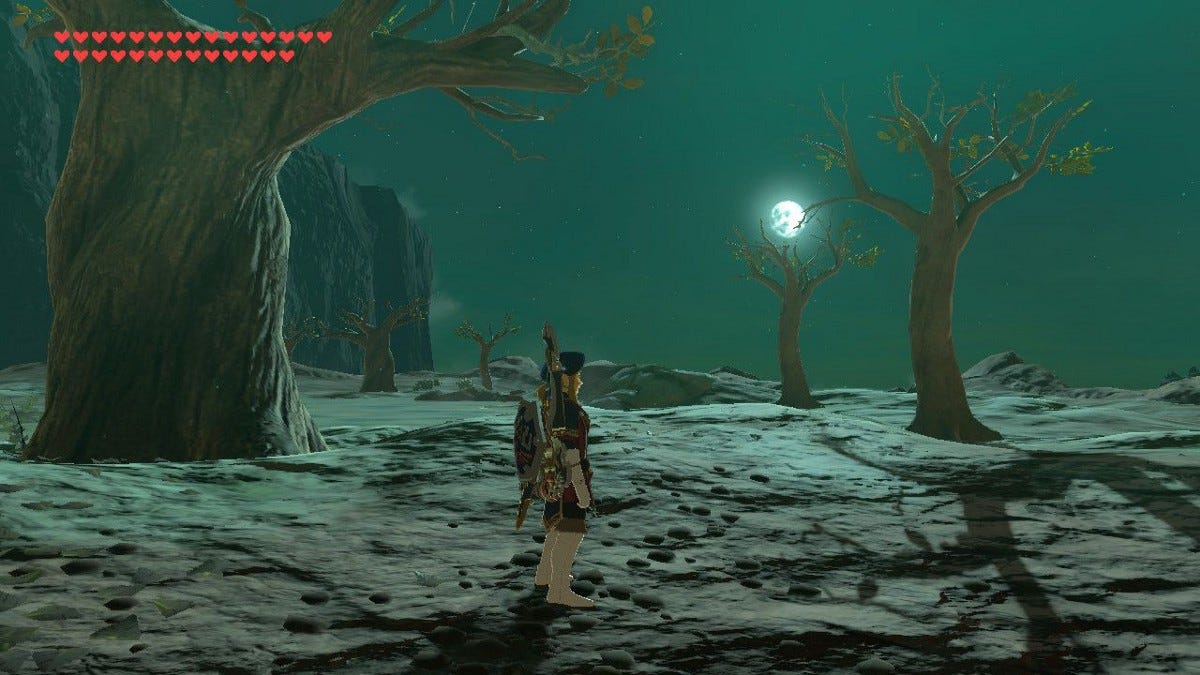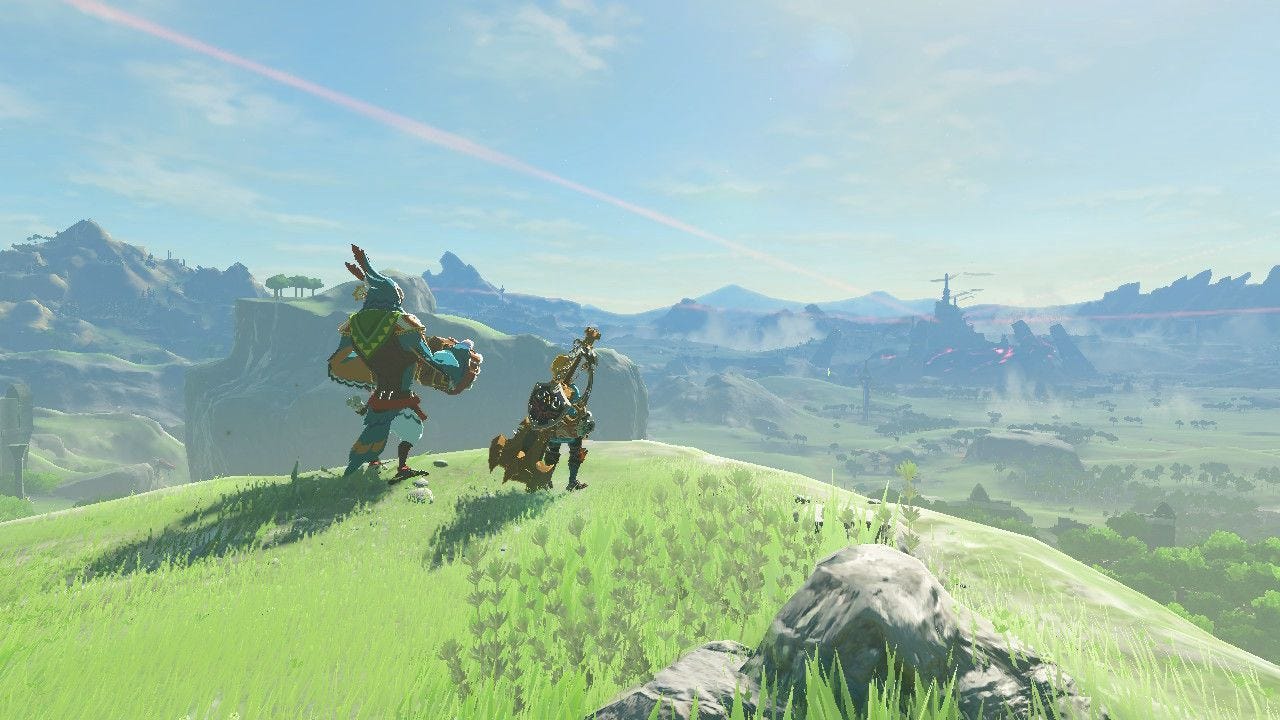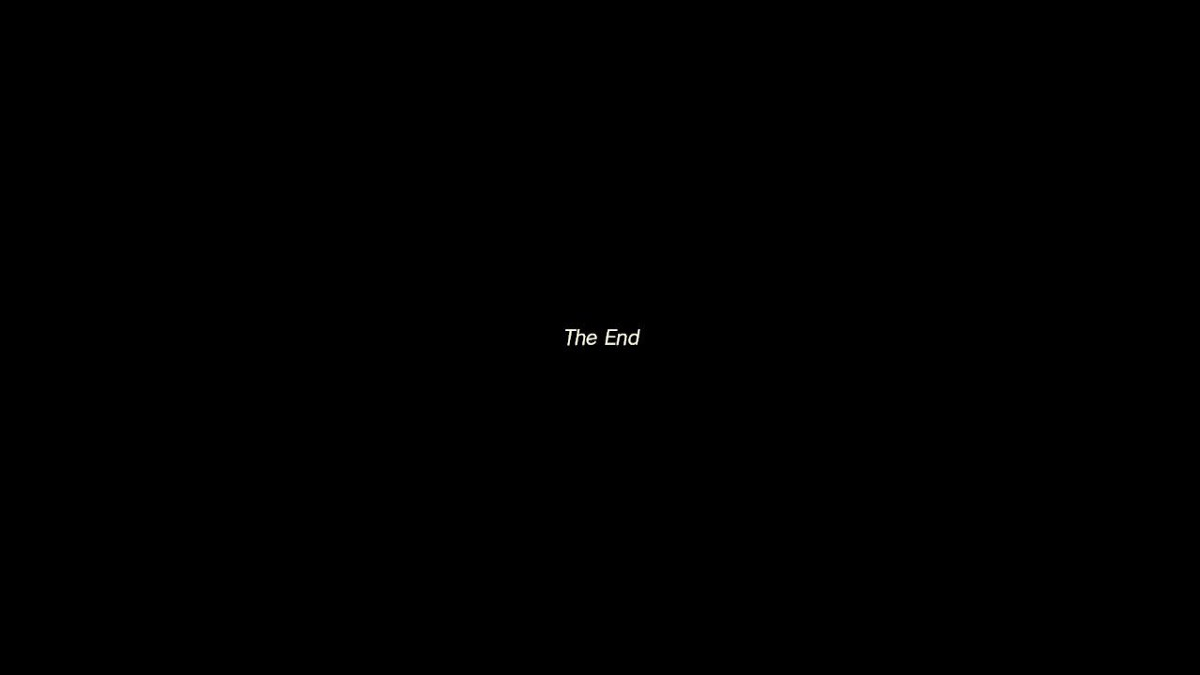Breath of the Wild, Three Years In: A Retrospective
Its flaws are increasingly noticeable, but so are its strengths.
(NOTE: This article was originally published at Level Up Media on March 3, 2020.)
It has been exactly three years since The Legend of Zelda: Breath of the Wild was released into the wild (pun intended, #SorryNotSorry), shaking up the Zelda franchise—and gaming in general—in ways that are still reverberating today.
I'm not just talking all the tricks and glitches that people are still discovering after all this time. I'm talking about its influence on game design, which is already showing and will likely persist throughout the coming decade (if not longer). I'm talking about Nintendo’s triumphant comeback via the Switch, which this game carried out the gate. I'm talking about the countless people who have been touched—sometimes in deeply personal ways—by the game and its characters, story, and message.
I was there since the very beginning, when I unpacked Breath of the Wild and my Switch on March 3, 2017. Since then, I have—after logging over 380 hours of playtime—completed the game all the way through to 100%. Every shrine, side quest, armor upgrade—yes, even every Korok seed. I'm not saying this to brag (well, not entirely), but rather to illustrate just how much I've got to say about this game.
I’ll get started now.
WARNING: This article is Rated “S” for “SPOILERS”
Beware! This article contains major gameplay and story spoilers, as well as tons of spoilerific (and completely original!) screenshots. You’ve been duly warned.
To the End of the Wild and Back Again
When I wrote my first Breath of the Wild article after only 20 hours of gameplay, I declared it to be an instant masterpiece, one of the greatest games I ever played, and a perfect showcase of video games’ creative and artistic potential.
I still believe all of those things — in fact, I believe them even more now. After I published my post, I got scared; after all, I’ve played plenty of games that impressed and awed me in the beginning, but had become a tedious slog by the end. I was afraid that Breath of the Wild might unfold similarly.
Fortunately, this was not the case. The game consistently dazzled and wowed from beginning to end. Even now, as I re-play the game in Master Mode, I keep discovering cool tricks and little details that keep me engaged and entertained, and probably will for years—and maybe decades, like with Ocarina of Time—to come.
Indeed, Breath of the Wild is a rare gem that becomes better the more I play it. And no matter how many breaks I take, inevitably, I always get drawn back in.
My very first playthrough of Breath of the Wild was such an incredibly wonderful and joyful experience that I didn’t want it to end (a few of my friends have played through the whole game and the DLC but still refuse to fight Calamity Ganon for this very reason). Coming to the realization that the magic, surprise, and wonder of my first playthrough was finally coming to an end weighed heavily on me. And after I finally hit the magic number and waxed melancholic about having finally wrung as much as I thought I ever could out of the game, I moved on for a while.
But not for too long. A few months later, I started my second playthrough.
There are those who say that while the first playthrough is incredible, Breath of the Wild has no replayability once you’ve found and completed everything once. I see where they’re coming from, but I beg to differ. I’ve found that playing through the game a second time is a worthwhile experience for its own reasons, including:
Discovering Things You Missed the First Time
Much like re-reading a book like The Lord of the Rings or re-watching a show like Game of Thrones (the first six seasons, anyway), replaying Breath of the Wild leads you to notice tons of tiny details you might have missed the first time around.
Breath of the Wild is a ridiculously dense and robust game, quite the feat given how huge its world is, and its physics engine is one of gaming’s most complex and life-like. This means that no matter how far you explored — or how thorough you were — during your first playthrough, you are all but guaranteed to discover new areas, characters, moments, tricks, or easter eggs the second time around.
Even now, three years in — by which time legions of speedrunners, completionists, and streamers would have long dug up all of most other games' secrets — people are still finding and sharing awesome new discoveries from all corners of Hyrule.
These range from hidden alcoves that yield tons of treasure to game-breaking, physics-bending, “this-really-shouldn’t-work-but-holy-crap-it-totally-does” exploits and stunts. Even the game’s developers were impressed by all the tricks that players have found, some of which they never anticipated.
One of my personal favorites is the stasis launch—which would’ve really come in handy the first time I tried scaling the Central Tower—as well as the Looney Tunes-Esque Yiga Clan murder videos which are still hilarious even after watching them so many times.
I'm discovering new things as well, though these are more "micro," or personal. A new view, or a new path, or a new perfect screenshot. I’ve also taken breaks and played other games at several points over the past few years, and this—combined with the passage of time and the sheer scale of Breath of the Wild—meant that my memories got fuzzy enough to stump me on Shrines and Side Quests I’d completed before, thus retaining some of the game's freshness.
Finally, replaying certain segments also brings back warm memories of my first playthrough—yes, I’m already getting nostalgic about this game.
Seeing Things From a Different Angle
New discoveries aside, a second playthrough also allows you to experience the game through a different lens. It frees you from being tied up in the anticipation and suspense of both watching the plot unfold and discovering an unfamiliar world.
Now that the game has lost its novelty, I've fully charted the map, and the ending has become old news, it’s easier to simply admire the craftsmanship that went into making the game and appreciate the detail packed into each pixel.
In fact, I would even argue that the main quest (and therefore, the story) is fairly insignificant when it comes to enjoying the game, even during one's first playthrough—and I mean this in a good way, as someone who mostly plays games for their stories.
To illustrate: my fondest memories from Breath of the Wild were never connected to the main quest — they all happened when I was either straight-up lost or just dilly-dallying around with no end goal or objective in mind. Simply exploring Hyrule for its own sake has led me to many deeply and quietly profound moments.
This is also the main reason I decided to not use fast travel during this playthrough (but I'll briefly touch on self-challenges later).
Indeed, now that I don’t have the itch to advance the story and find out what happens to Link & Friends in the end, I’m free to just explore. I can forage for truffles, raft down rivers, shield surf mountains, ride bears, and mess with Bokoblins as much as I want, without needing to know what will happen next. And I’m loving every minute hour of it.
Never the Same Game Twice
Also worth mentioning: the game’s aforementioned open world, teeming environment, and familiar physics ensure that no two playthroughs will ever turn out alike, even if you make exactly the same choices and follow the exact same path each time.
In my first piece, I pointed this out in the context of two people playing the game at the same time. And it applies just as much to one person playing the game at different times.
Hell, combat alone offers near-infinite possibilities due to the several different weapon types, monsters that adapt to your fighting style, effects of the surrounding environment and random occurrence of things like rain and thunder which can instantly turn the tables of battle—not to mention the tactical depth from all the form of offensive, defensive, evasive, and stealth maneuvers you can use.
And that’s not even including the randomized item drops, shooting stars, or blood moons. Or the fact that most puzzles have multiple solutions. Or the many creative (and tough) self-imposed challenges that players have devised to test one’s skill and strategic prowess to the max while wringing more enjoyment out of the game. Or when all these factors converge and force you to try something completely different to overcome a problem you thought you knew how to solve. All of these elements—both on their own and as a whole—make subsequent playthroughs feel different and exciting.
As such, just when I think I've seen all I needed to see in post-calamity Hyrule, the game always finds new ways to surprise and delight me—whether I've played for 20 hours, or 200.
Just a Heart Piece Short of 100%
Breath of the Wild is the closest thing to a perfect game I’ve played in a long time, if not ever. Emphasis on “closest,” because while it skirts incredibly close to perfection, it does have its flaws—and some noticeably detract from the game’s experience. This is especially noticeable in the late game, because the more you play, the less you’re able to ignore these shortcomings. Among them:
The final battle, while visually entertaining, was much easier than one would reasonably expect from a final boss fight—to the point of being anti-climatic. It stood out in a game which up to that point could be (and often was) brutal and unforgiving in its difficulty.
The English voice acting was generally subpar and often veered into cheesiness. Do they really have to give everyfictional royal a faux-British accent?
While the Divine Beasts were technically dungeons, they all looked too similar. I wouldn’t have minded having a Fire Temple on Death Mountain, for example, instead of the dungeon being Vah Rudania’s interior (this is just in terms of aesthetics; the puzzles in all the Divine Beasts are excellent).
Speaking of dungeons, they erred too much on the short side. Going by length, they barely qualified as “Zelda Dungeons.” I also wouldn’t have minded more dungeons (along with more shrines—yes, dungeons and shrines cancoexist).
The Rito and Goron quests were much too quick and simple—particularly the Rito quest where you literally just go straight to the Divine Beast from Rito Village—compared to the much more intricate and complex Zora and Gerudo quests.
The game’s challenge also drops steeply in the second half as your weapons become powerful enough for the combat to become lopsided—even more so if you’ve completed the DLC and gotten your hands on the ridiculously overpowered Master Sword v2.0 and similarly useful armor items like Majora’s Mask. This lets you plow through the rest of the game without the tension and excitement that came with being so vulnerable at the beginning.
Speaking of lopsidedness, there are a few items and recipes that are so ridiculously powerful that they essentially break the game’s challenge factor. For instance, the food you can cook with five Hearty Durians, Endura Carrots, Mighty Bananas, or Fortified Pumpkins—all of which can be obtained in large quantities fairly early in the game.
These let you boost your hearts, stamina, attack power and defense to late-game levels with minimal effort. Carry a few Fairies around, just in case you do get one-shotted, and you can steamroll over anything the game throws at you, up to and including Calamity Ganon, without ever seeing a “Game Over” screen.
I must also mention enemy health regeneration. In Master Mode, if you go too long without damaging an enemy, they will regain health. Rather quickly, too. While I understand Nintendo trying to notch up the challenge factor—and "Master Mode" has that name for a reason—it had the unfortunate side effect of taking all the strategy out of combat..
This is especially true early in Master Mode, when you're already facing stronger enemies sooner, and with comparably weak weapons. But until you get strong and overpowered later in the game, there's no more shooting fire arrows at explosive barrels or blowing bombs at enemies with Korok leaves—those Moblins will be back at full health in a few seconds, and now they're really peeved at you.
No, the only way to really beat enemies throughout most of Master Mode is to spam the attack button until they go down (or perhaps rain arrows down on them, provided you're a really good shot, quick on the draw, and have a powerful enough bow). Now you've burned through a bunch of weapons, but the treasure chests don't have weapons strong enough to feel like a proper reward. As a result, for most of Master Mode, you're better off avoiding enemies altogether. And that's no fun.
Not that I think health regen should go away entirely—but couldn’t enemies wait more than two seconds before regaining their health?
Finally, it rains WAY. TOO. DAMN. MUCH. It’s simply baffling that the game lets you drink a potion to stop you from bursting into flames on Death Mountain but doesn’t provide a similar option to stop you from slipping to your death when your stamina runs out once a rainstorm suddenly starts pouring, just before you reach the top of that really big hill you’ve been climbing for 10 straight minutes.
BUT! Before you revoke my fan card, I will reiterate that in spite of these flaws, Breath of the Wild is incredible, wonderful… and yes, really close to perfect. If the upcoming sequel builds on Breath of the Wild’s physics engine and open-world goodness while addressing these flaws... could it end up as the perfect game?
Breath of the Wild: The Next Three Years
Speaking of sequels, Breath of the Wild’s resounding commercial and critical success all but dictated at least one direct sequel in the near future. And, indeed, at E3 2019, Nintendo showed a teaser trailer for the Breath of the Wild sequel that has spawned endless speculation about what it’ll have in store for us.
If you’ve read this far, I don’t need to explain how exciting this news is. Like Ocarina of Time in the 1990s, Breath of the Wild has forever flipped the switch on what people have come to expect from the Zelda franchise, open-world adventure games, and arguably video games as a whole. It’s fun to think about how the sequel will build on the revolutionary changes that Breath of the Wild laid the foundation for.
It also appears as if Nintendo is creating another story using the same visual style and physics engine—akin to how they made Majora’s Mask with Ocarina of Time’s engine and assets—which is awesome. Not just because Breath of the Wild is already so damn gorgeous, but also because—again, much like Majora’s Mask—the Zelda team could use the time saved with reusing the engine to take creative leaps in story, themes, and gameplay.
But even if there wasn't a sequel coming, the future looks bright for Zelda, Link, and company three years into Breath of the Wild. Completionists keep discovering new tricks and easter eggs, speedrunners keep setting new records, and players worldwide keep getting introduced to the unforgettable experience that is Breath of the Wild—sometimes, it's even their very first Zelda game—and this will surely be the case up to and beyond the sequel’s release.
Breath of the Wild has created a whole new generation of Zelda fans, reinvigorated existing fans, and reinvented the whole scope of possibilities for what this medium is capable of and should aspire to. Despite its flaws, Breath of the Wild has turbo-charged the Zelda series’ ongoing evolution as modern-day mythology, and has set the stage for Link to go on many more adventures for many more years to come.
And that’s just in the last three years! Even if the sequel takes three more to come (unlikely, but not impossible), Breath of the Wild has many more breaths to take before it fully realizes its enormous potential.


